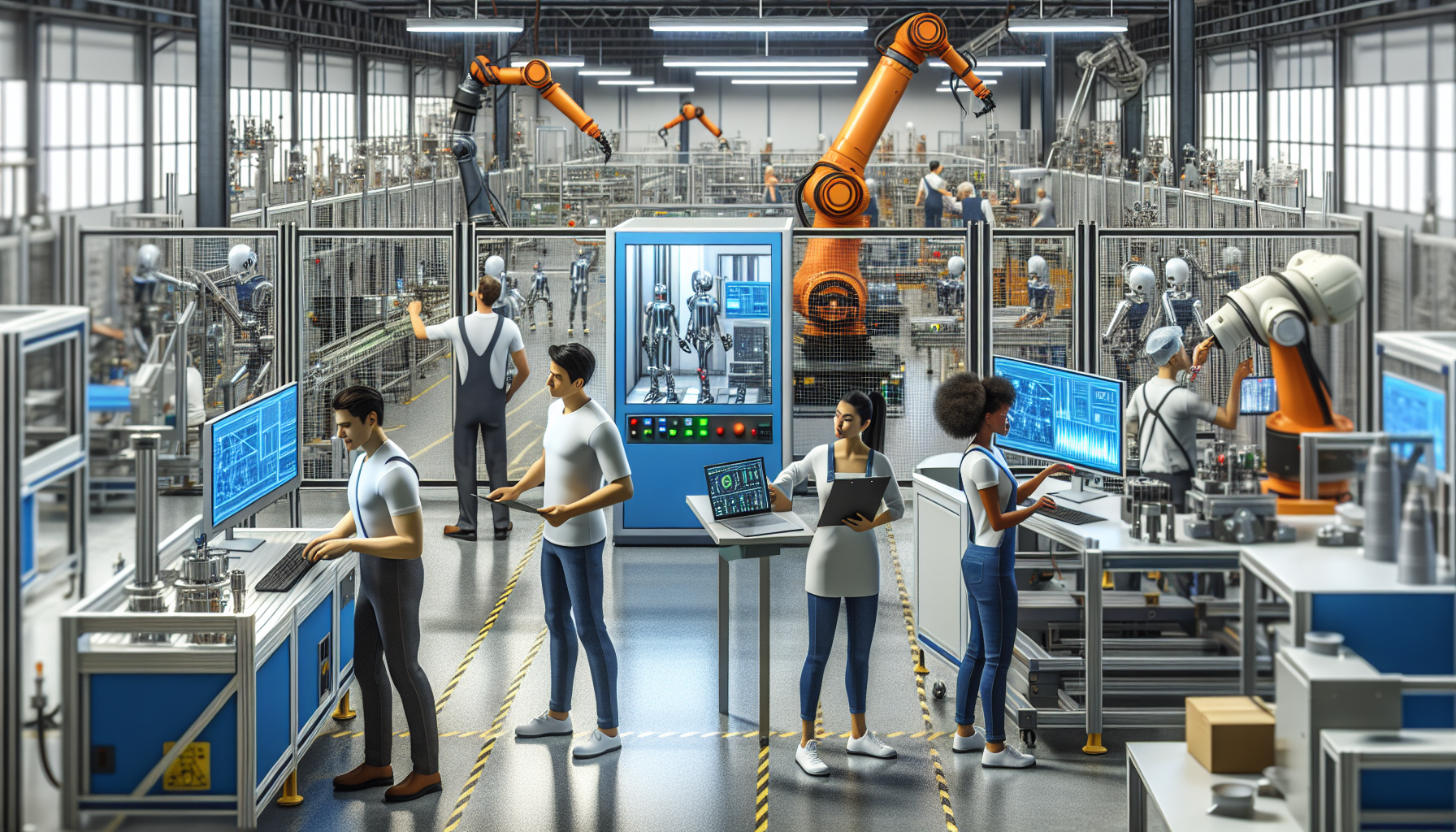How to Get a Job in Manufacturing in 2025: A Complete Career Guide
Meta: Discover proven strategies to launch your manufacturing career in 2025. Learn about required skills, training programs, and emerging opportunities in modern manufacturing.
Did you know that by 2025, the manufacturing industry is projected to face a shortage of 2.1 million skilled workers? This gap presents an incredible opportunity for job seekers! I’ve spent 15 years in manufacturing recruitment, and I can tell you that the industry is undergoing a dramatic transformation. From AI-driven production lines to sustainable manufacturing practices, the sector offers exciting career prospects that combine traditional skills with cutting-edge technology. Let’s explore how you can position yourself for success in this evolving industry!

Current Trends in Manufacturing Employment
“Have you noticed how much manufacturing has changed in recent years?” asked Sarah, a veteran industry analyst.
Tom, a recent engineering graduate, nodded. “Absolutely. It’s all about Industry 4.0 and digital transformation now, right?”
“Exactly,” Sarah replied. “We’re seeing a huge shift towards smart factories and automation. This is creating some exciting new job roles.”
“Like what?” Tom inquired eagerly.
“Well, there’s a growing demand for roles like IoT specialists, data analysts, and robotics engineers. It’s not just about operating machines anymore; it’s about optimizing entire systems.”
Tom’s eyes lit up. “That sounds fascinating! What about salaries in these new roles?”
Sarah smiled. “The good news is, these specialized positions often come with higher salaries and excellent growth potential. But remember, the landscape varies depending on where you are.”
“Oh? How so?” Tom asked.
“Well, certain regions are becoming manufacturing hubs. Places like the Midwest in the US, or areas in Germany and China. These spots often offer more opportunities and competitive salaries.”
Essential Skills for Manufacturing Careers in 2025
“So, what skills should I be focusing on to succeed in this new landscape?” Tom wondered aloud.
Sarah leaned forward. “Great question. Technical skills are crucial, of course. Understanding automation, data analysis, and emerging technologies is key.”
“But it’s not all about the tech, right?” Tom guessed.
“Absolutely not,” Sarah agreed. “Soft skills are becoming increasingly important. Things like problem-solving, adaptability, and teamwork are essential in modern manufacturing environments.”
Tom nodded thoughtfully. “What about digital literacy?”
“It’s non-negotiable,” Sarah stated firmly. “Everyone in manufacturing needs to be comfortable with digital tools and platforms now.”
“And certifications?” Tom pressed.
Sarah grinned. “They can definitely give you an edge. Look into industry-specific certifications that align with your career goals.”
Education and Training Pathways
“Speaking of which,” Tom said, “what’s the best way to get educated for this field?”
Sarah considered for a moment. “There’s no one-size-fits-all answer. Traditional degree programs are still valuable, especially for more technical roles.”
“But that’s not the only option, right?” Tom asked.
“Far from it,” Sarah replied. “Vocational training programs can be excellent, especially for more hands-on roles. And don’t overlook online certification courses – they’re a great way to upskill quickly.”
Tom’s eyes widened. “What about apprenticeships? Are those still a thing in manufacturing?”
Sarah nodded enthusiastically. “Absolutely! Many companies offer apprenticeship programs. They’re an excellent way to gain practical experience while learning.”
Breaking into the Manufacturing Industry
Tom leaned forward, clearly excited. “So, how do I actually get my foot in the door?”
Sarah smiled at his enthusiasm. “Well, entry-level positions are always a good start. Look for roles like production associate or junior technician.”
“What about internships?” Tom asked.
“Definitely pursue those,” Sarah advised. “They’re a great way to gain experience and make connections.”
Tom nodded. “Speaking of connections, any networking tips?”
“Join industry associations, attend trade shows, and don’t be afraid to reach out to professionals on LinkedIn,” Sarah suggested. “Oh, and make sure you’re using job search platforms effectively. Many manufacturing jobs are posted on industry-specific job boards.”
Career Advancement Strategies
“Once I’m in, how do I move up?” Tom asked, already thinking ahead.
Sarah chuckled. “Always thinking ahead, huh? Well, professional development is key. Take advantage of any training opportunities your employer offers.”
“What about outside the company?” Tom inquired.
“Industry associations can be great for this,” Sarah explained. “They often offer workshops, conferences, and networking events.”
Tom nodded. “Any other tips?”
“Find a mentor if you can,” Sarah advised. “Someone experienced in the industry can provide invaluable guidance. And always keep an eye out for leadership opportunities. Taking on more responsibility is a great way to advance your career.”

Conclusion
Summarize key steps for entering manufacturing, emphasize the industry’s bright future, and encourage readers to take action on their career goals. Include a call to action to start their journey today.




